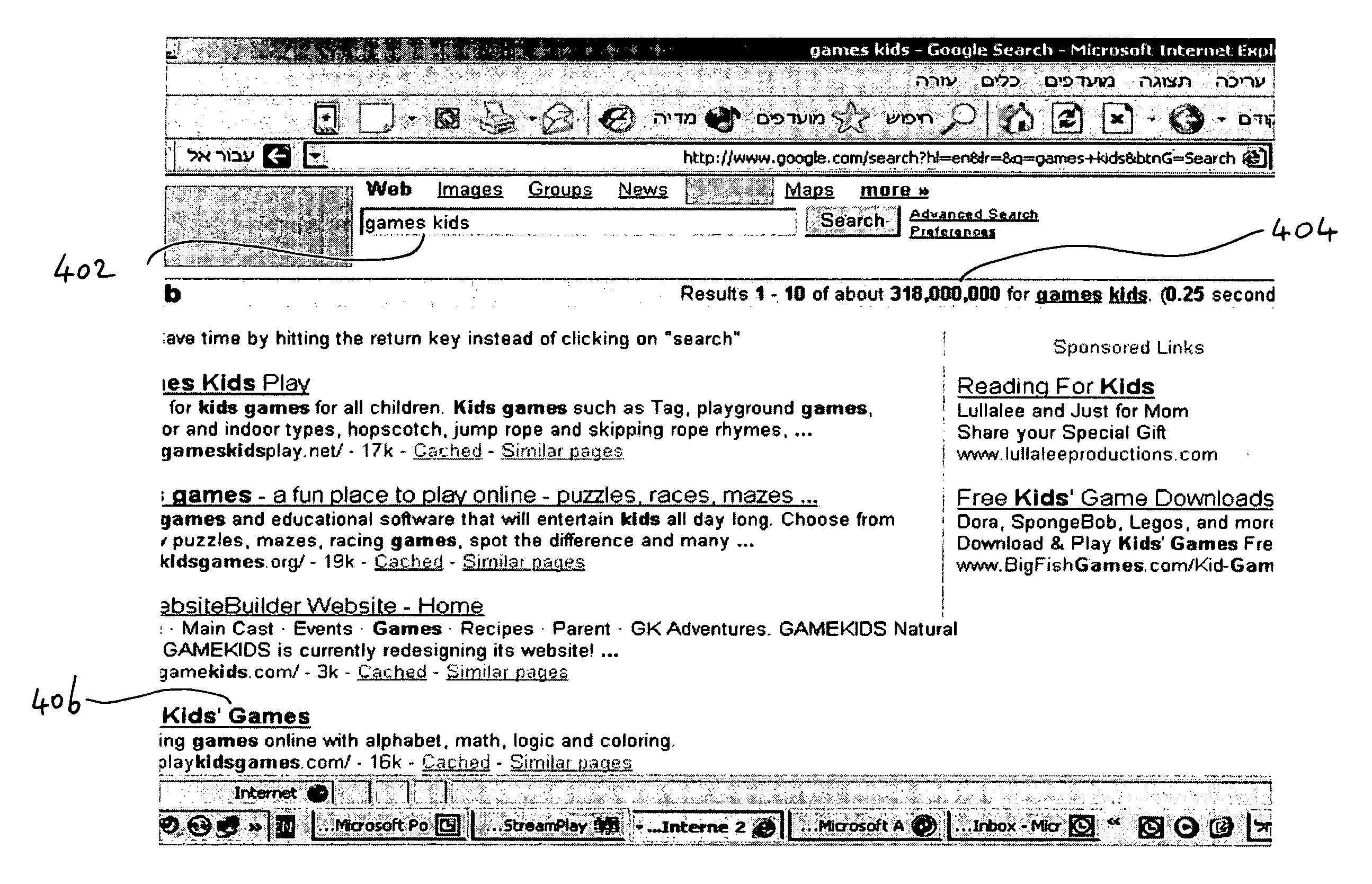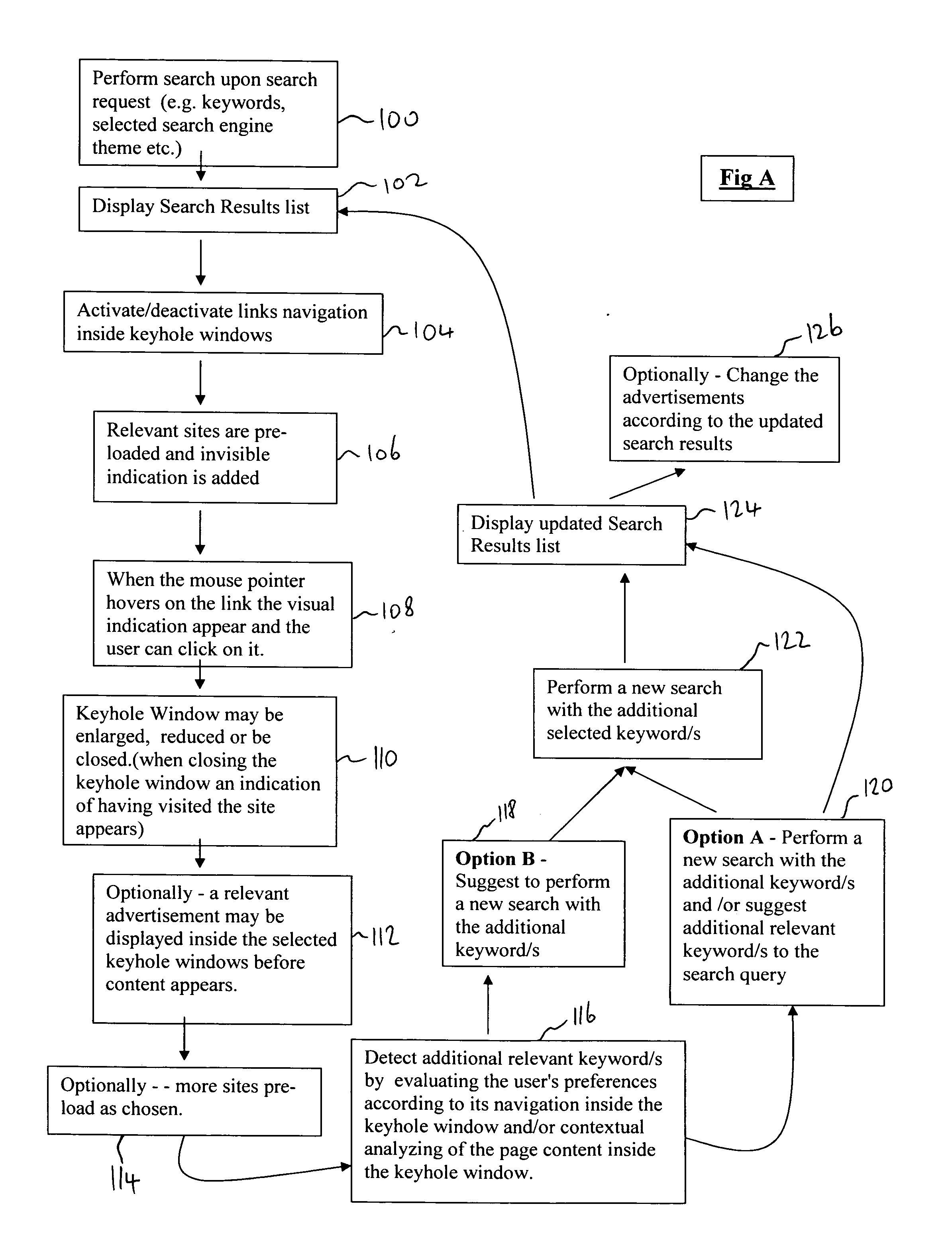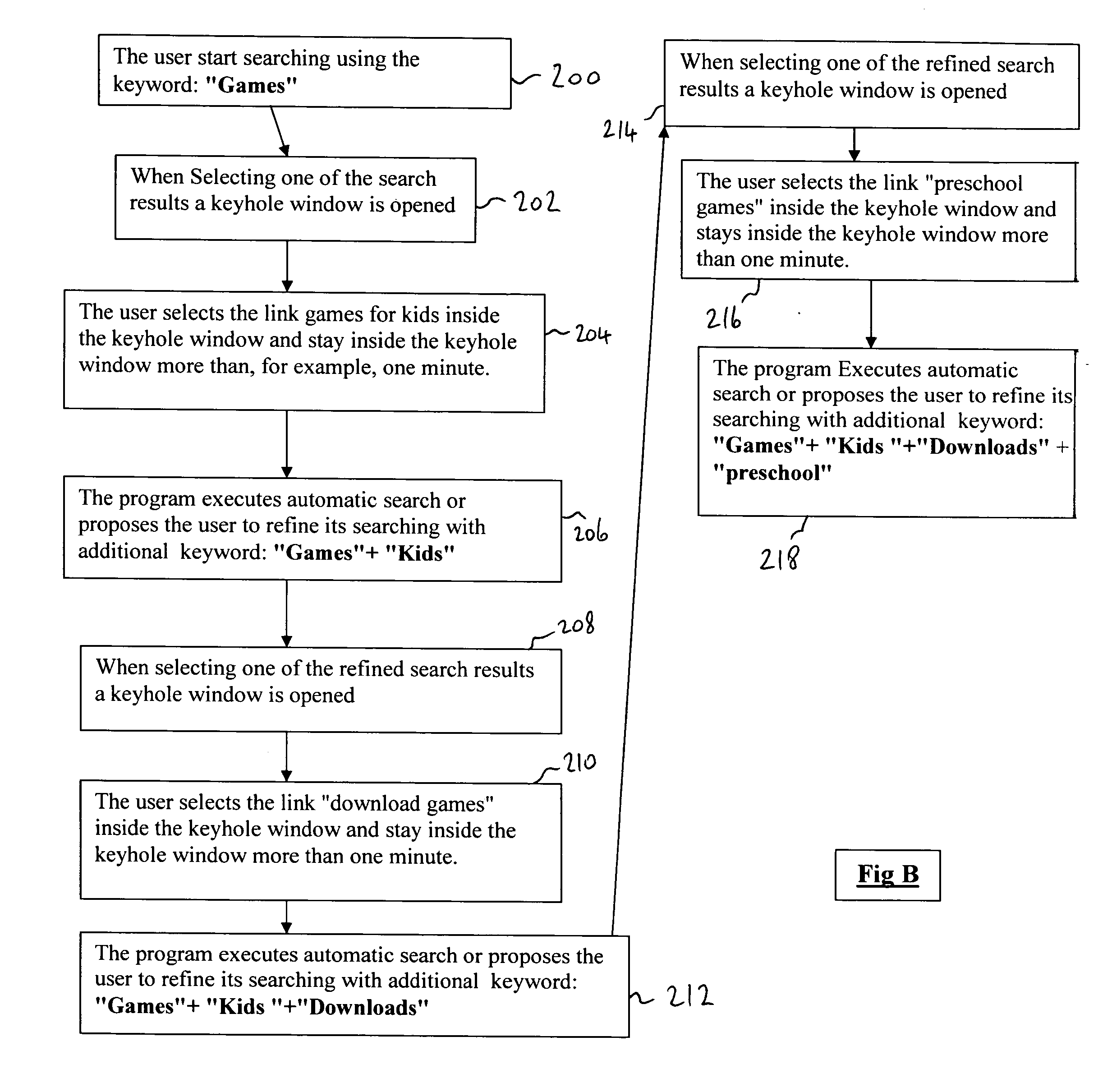As more and more information is created and stored in electronic format, and as paper documents are converted into electronic format, finding relevant data among this increasingly large body of information becomes increasingly difficult.
Nevertheless, this order is not always what the searcher wants and he is left to search dozens of web sites to find the one that answers his needs.
This can be a very
time consuming exercise and often causes the person to miss search results of interest to him because of the excess volume of search results listed not necessarily in the best order for the searcher.
The difficulty is that the computer can only react to and search according to the input information.
Even when only a few internet sites are required to be looked at, it still takes an unnecessarily long time.
His main difficulty is to find out as quickly as possible which of the many search results is relevant to him.
Significant efforts have been directed toward improving the search algorithms and methods utilized by search engines and similar programs, predominantly driven by the increase in the volume of information and the resulting increase in difficulty in filtering out from the
mass of data produced from a search, the results most likely to satisfy the user.
In many cases, however, a basic obstacle to the ability of a
search engine to generate an optimal result is the initial quality of the
search words used by the searcher.
However, the amount of skill required to generate searches in this manner often exceeds that of most users, and as a consequence, many searchers are unable to take
advantage of such advanced search language and techniques in order to properly describe their queries and to produce the desired results.
The obvious difficulty with this approach is that computers are often used by different people and it does not always request to identify the user.
This also has the difficulty that the first searches will not benefit from this extra information, a previous searcher on that computer would introduce irrelevant information for a future searcher and it could be that
search words used in previous searches are incorrect or unwanted for a current search.
The computer would not “know” this information and thereby produce less desirable search results.
There is currently little work on personalizing web search results based on the user's real-time navigation.
Moreover, significant efforts have also been directed toward the optimization of
web page keywords in order to get high
ranking in the search results but there are still difficulties with those attempts at solving this problem from the point of view of the searchers and the search engines.
This tedious procedure continues until the person finds the site and information he is looking for or he terminates his search efforts, frustrated.
Moreover, losing primary view of the current
web page is often undesirable for the user, particularly when the user is merely attempting to view and browse the resources associated with the hyperlinks on the current
web page for example, in-page browsing of the web search results.
However, such operations are relatively slow.
Furthermore, managing a number of active browser windows or continuously navigating back and forth among multiple web pages while looking for desired content can be too complicated for many users.
Textual search results do not give enough nor sufficiently accurate information about their content and thus the user has to click many search results, whether or not they are relevant to him.
It causes a waste of time for the searcher and a waste of money for the advertiser as he has to pay even though the user is not interested in the advertiser's website content.
Search engine companies do not have an interest to change the
system as they
gain financially from this inefficiency.
The above prior art uses a method to provide the searcher with a preview window but their
disadvantage is that they are operated by the search page
operating company and whose source of operation is only that particular
search engine and is limited to their
server.
In other words those companies have a
server solution and do not provide
client side solution.
Thus, a browser using a different search engine that does not use a preview program, would not be able to enjoy the benefits of the keyhole windows program.
The prior art also has the
disadvantage of using a lot of “ram” memory of the user's computer as the preview pages load up.
Furthermore, the prior art, in most cases, does not enable the end-user to choose the size of window of those previewed sites.
Even in those cases where there is some choice, it is limited to few fixed window sizes and / or depend on previous configuration by the user.
However, it does not perform dynamic and real-time changing of the search results and / or re-searching based upon the user's real-time navigation preferences learned from its actual navigation through the keyhole windows.
It also display only a preview windows and does not enable the user to browse through keyhole browser windows, nor does it adjust its results based on the browsing negotiation 10 behavior of the user.
 Login to View More
Login to View More  Login to View More
Login to View More 


